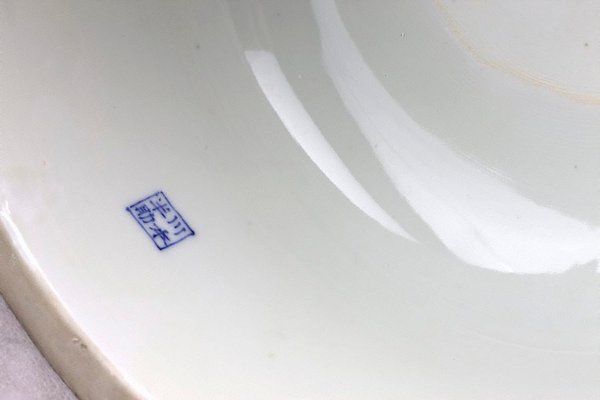Title
Lidded tripod urn with a lion dog (shishi) finial
19th century
Artist
-
Details
- Place where the work was made
-
Japan
- Period
- Meiji period 1868 - 1912 → Japan
- Date
- 19th century
- Media category
- Ceramic
- Materials used
- porcelain; glazes
- Dimensions
-
54.5 x 37.0 cm
:
a - urn, 36.3 x 37 cm
b - cover, 23.1 x 23.3 cm
- Signature & date
Signed inside cover, in Japanese, inscribed [as a square seal] "Kawamoto Hansuke". Not dated.
- Credit
- Acquired c1880
- Location
- South Building, ground level, Asian Lantern galleries
- Accession number
- 2458.a-b
- Copyright
- Artist information
-
Kawamoto Hansuke
Works in the collection
- Share
-
-
About
During the Meiji period (1868-1912), following the restoration to the throne of the Emperor Meiji, Japan actively sought international trade. By 1900 almost half of the ceramics manufactured in Japan were produced to appeal to international markets. A maker’s mark on this vessel attributes it to Kawamoto Hansuke, a name used by a succession of ceramic artists working in Seto, Japan in the 1800s. The urn was probably made for export to Europe or America as it is larger and more elaborate than most equivalent objects created for use in Japan. A common motif on Meiji wares, the spotted green ‘fu dog’ or ‘Shishi’ on the lid of this urn is derived from a Chinese composite lion dog associated with protection. The blue and white base of the urn features vignettes of a fox and a crane.
By the time of the 1862 World Fair in London, Japanese style had become extremely popular. The Japanese government participated in a range of fairs including the Sydney International Exhibition in 1879, the 1900 Paris International Exposition and the World’s Fairs held in America in the late 1800s and early 1900s.
-
Places
Where the work was made
Japan
-
Exhibition history
Shown in 1 exhibition
Correspondence, Art Gallery of New South Wales, Sydney, 10 Sep 2022–2024

